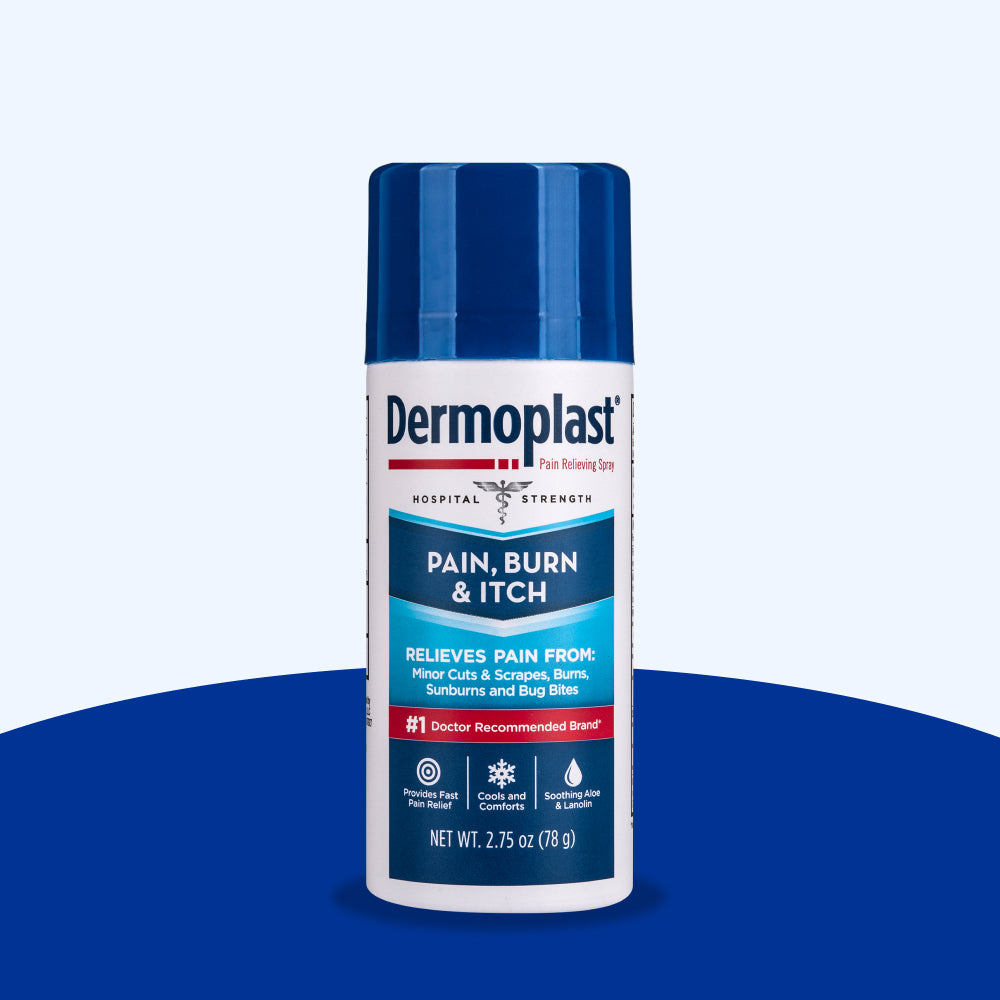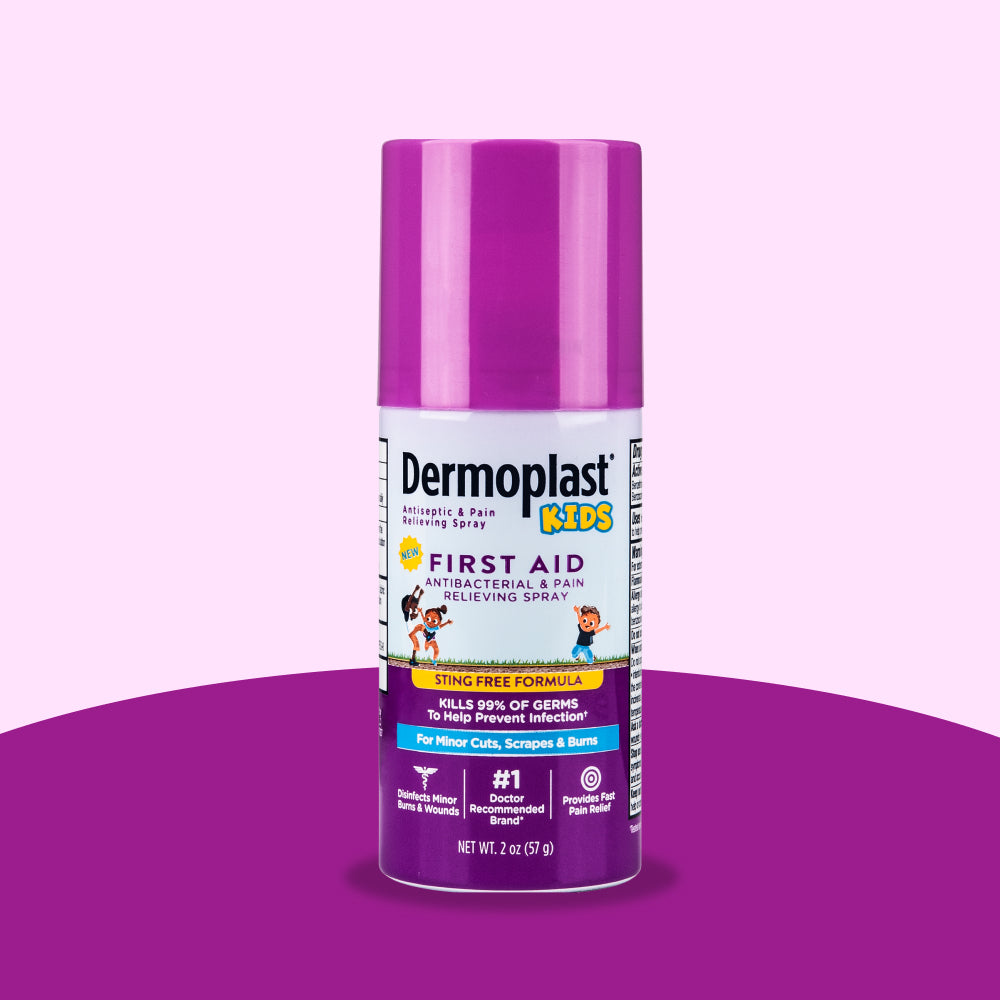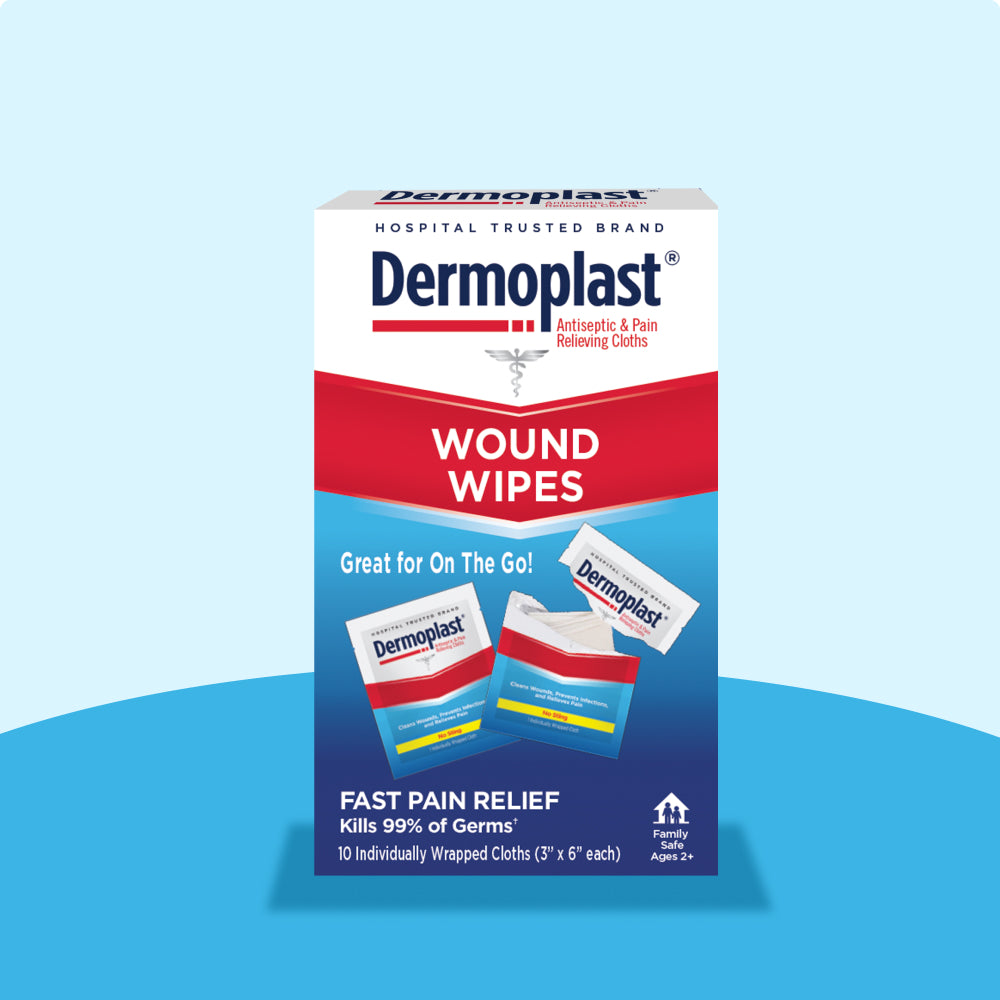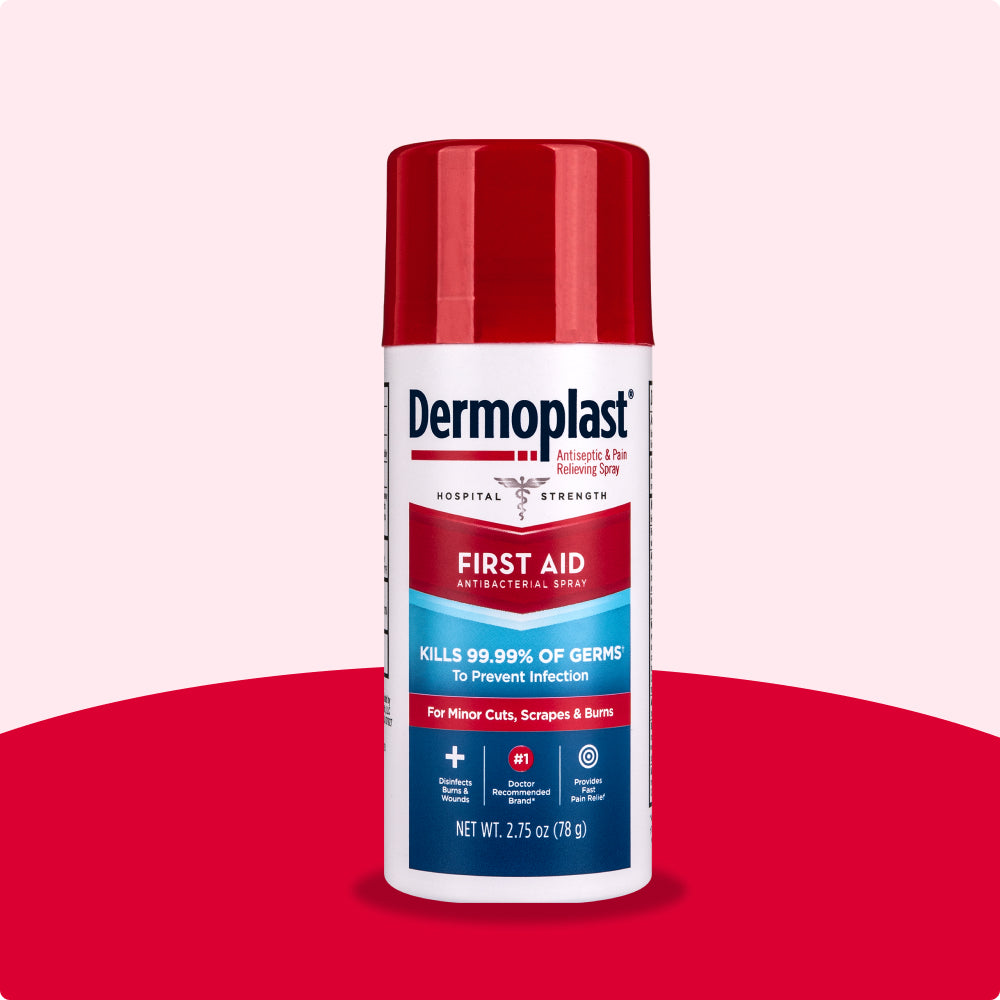
HOW TO CARE FOR A WOUND
Here’s what you can do to treat minor cuts and help your skin heal properly.
STOP THE BLEEDING
by applying gentle pressure to the wound with a gauze pad or clean cloth. If blood soaks through, add another piece on top. Consider raising the injured area to help slow the flow of blood and keep up the pressure for a few minutes.1,3
CLEAN THE WOUND
of any debris or dirt to prevent infection. Rise the cut with cool, clean water.3,4 Wash around the wound with a little bit of soap but don’t get soap on the wound.3,4 Gently pat dry with a clean gauze pad.4.
HELP THE SKIN HEAL
once the wound is clean. To aid the healing process, consider applying an antibacterial ointment onto the wound to help the wound stay moist and prevent infection.1,3 Another option is to use to Dermoplast, which provides pain relief, an antiseptic agent to help prevent infection, and ingredients to keep the skin moisturized.
COVER THE CUT
with a bandage to help promote the healing by keeping the wound clean and help prevent re-injury. A bandage should be replaced daily, or when it gets wet or dirty. Before applying a new bandage, inspect the wound for signs of infection.3





